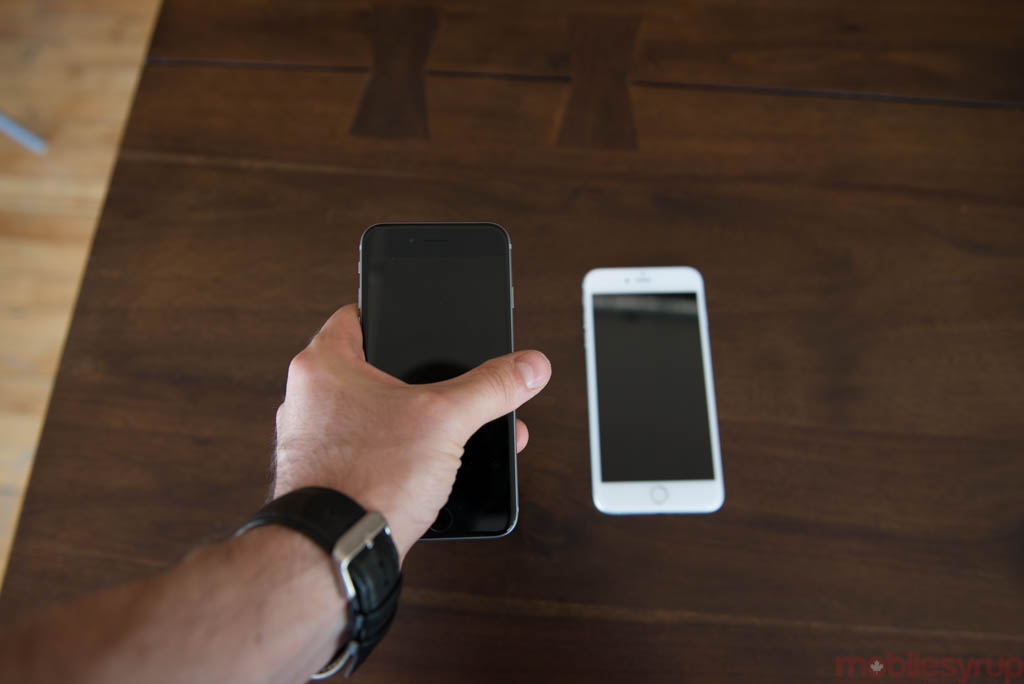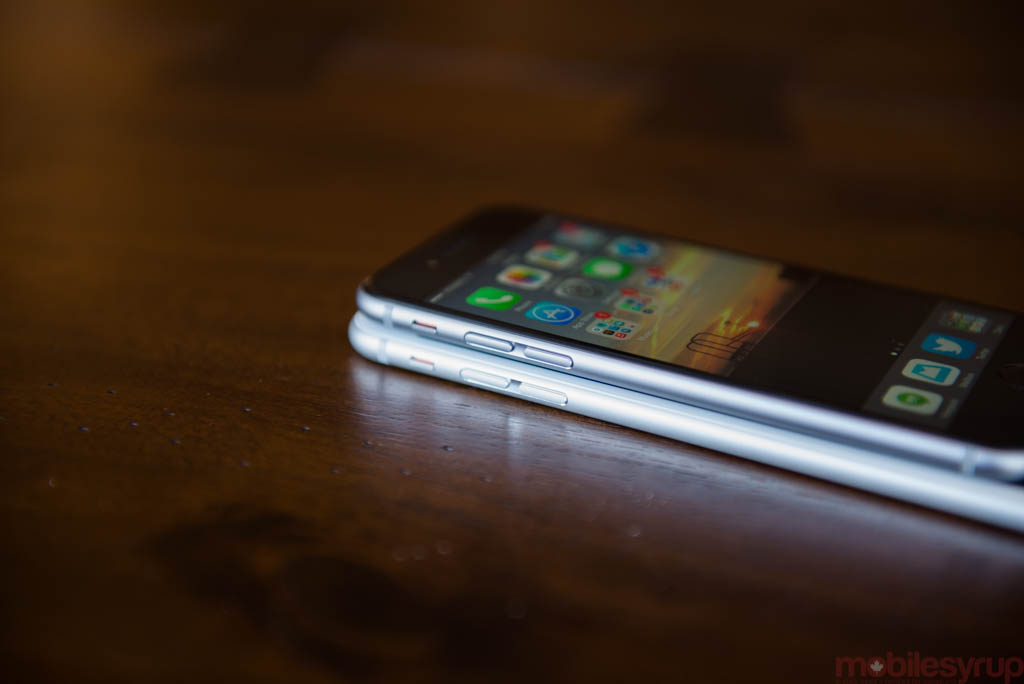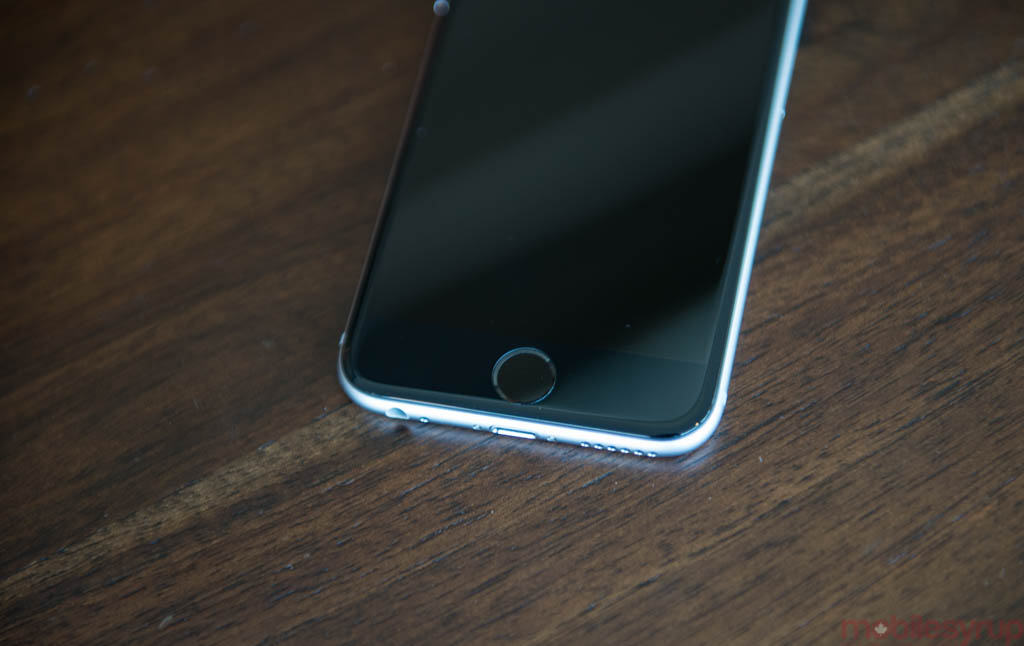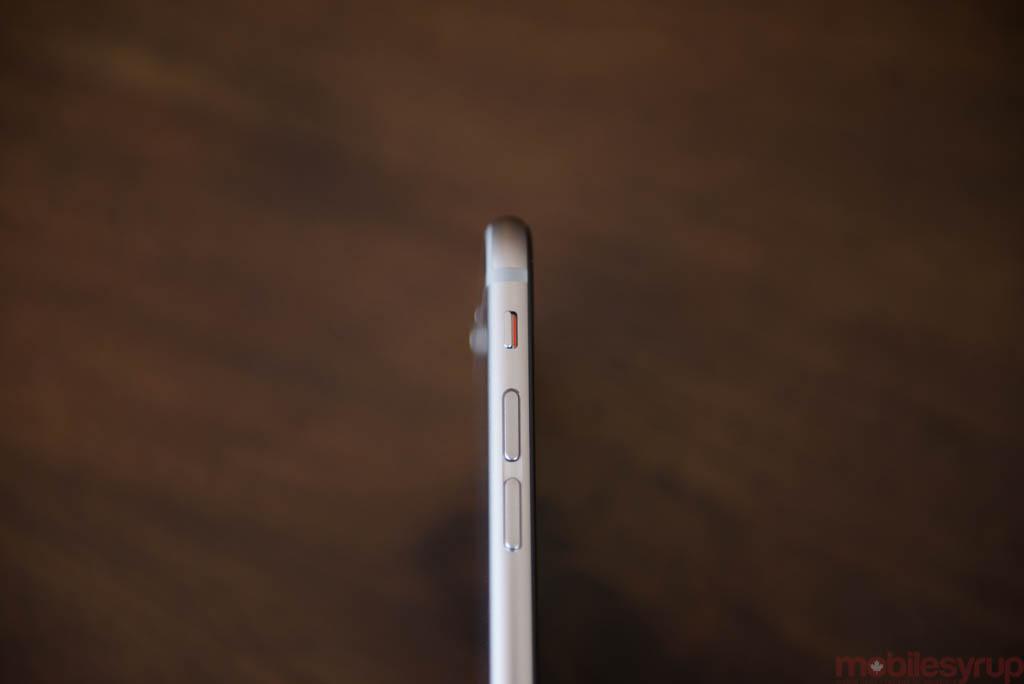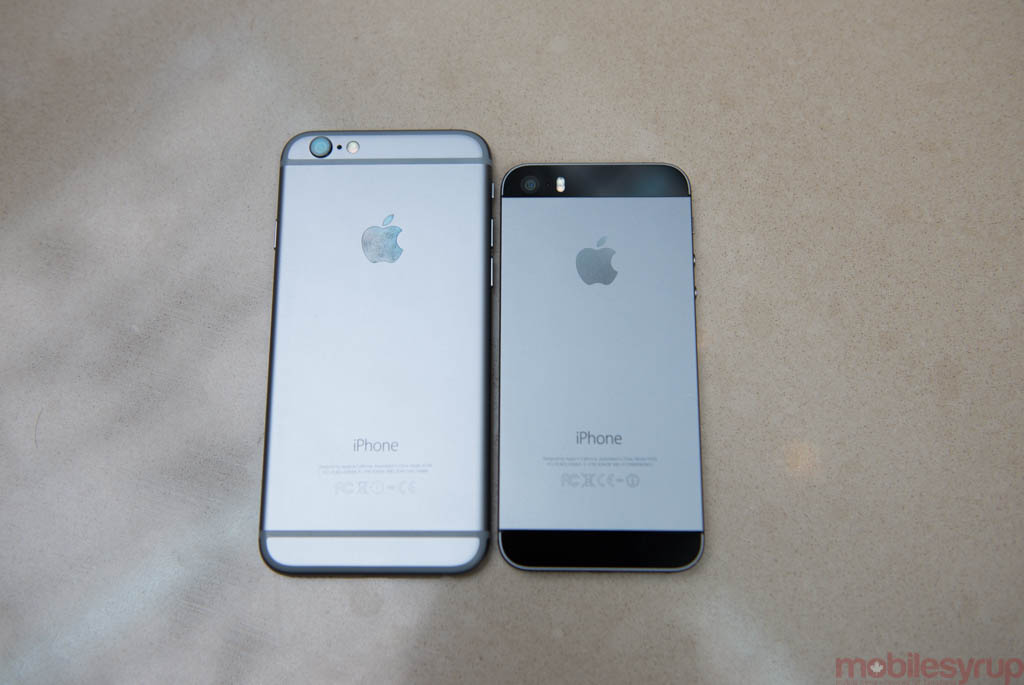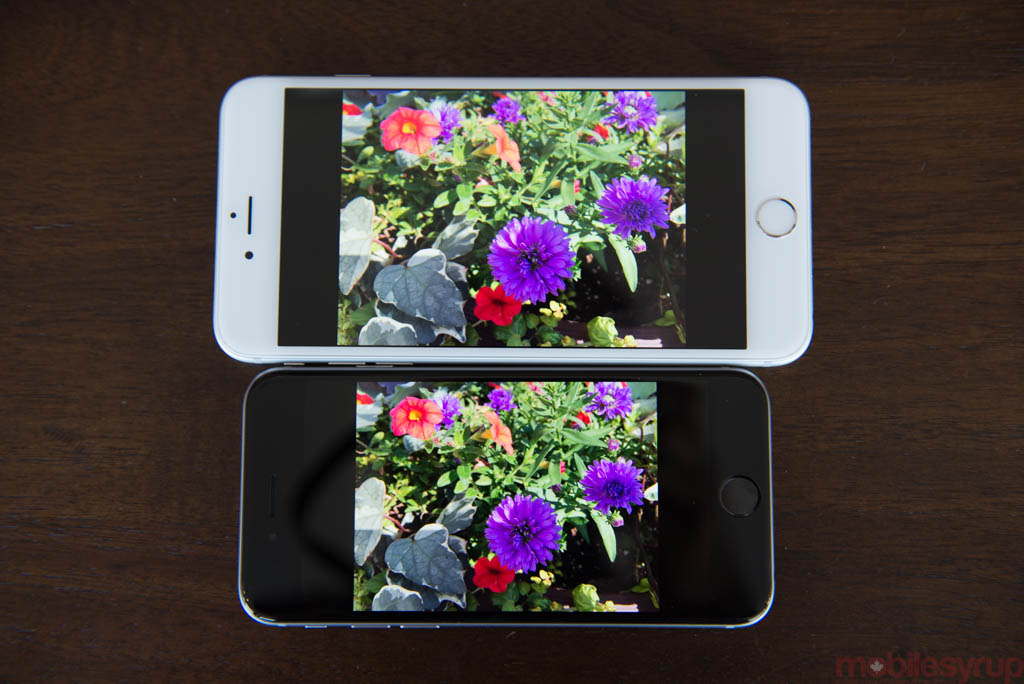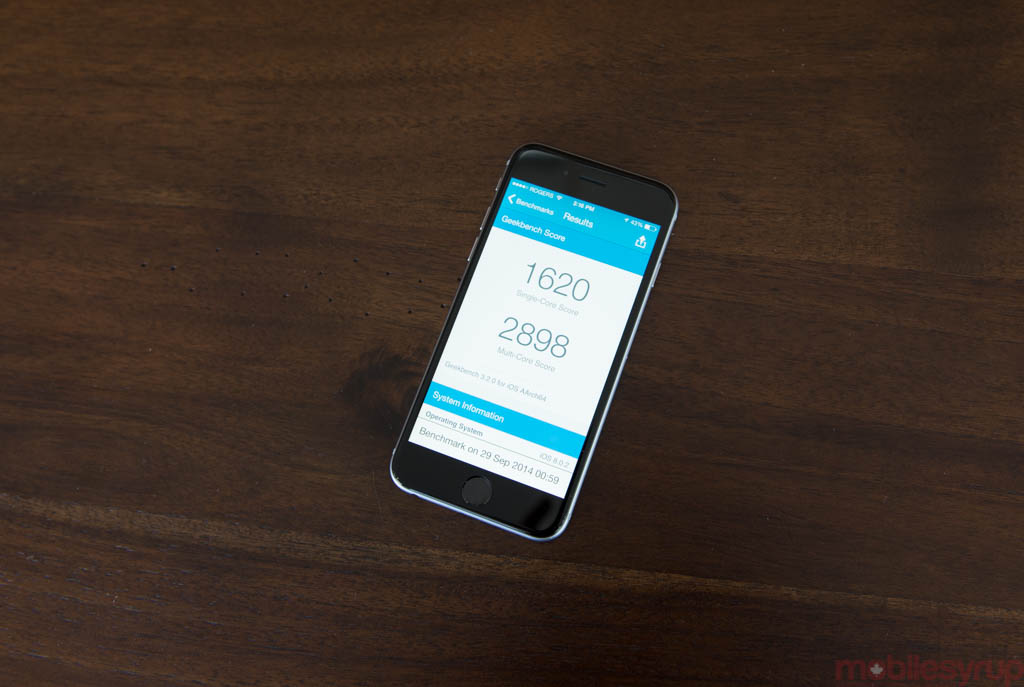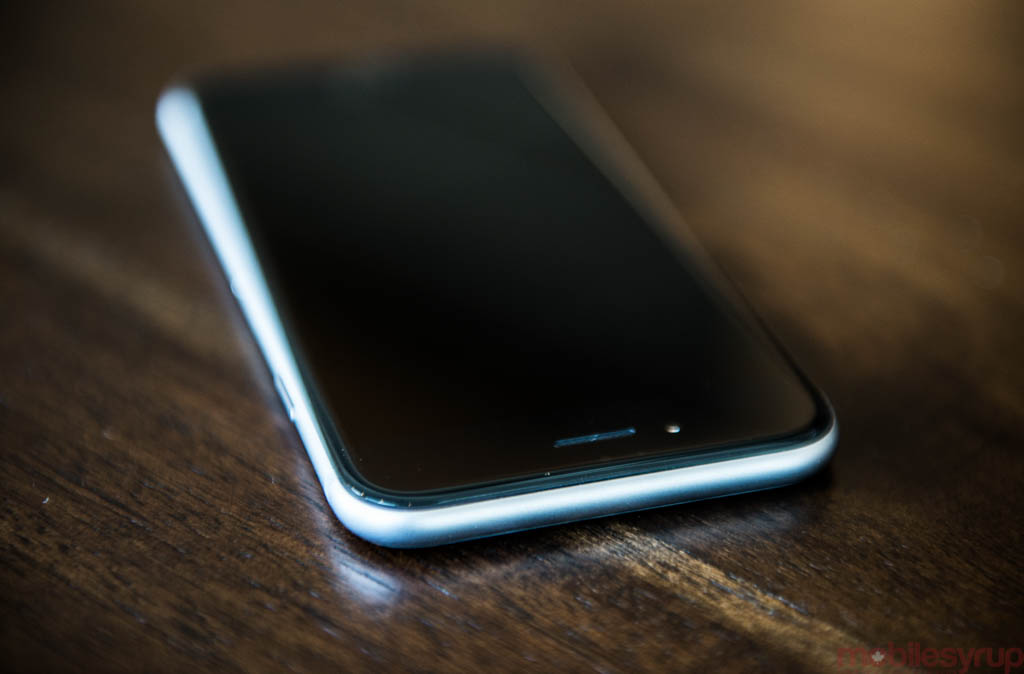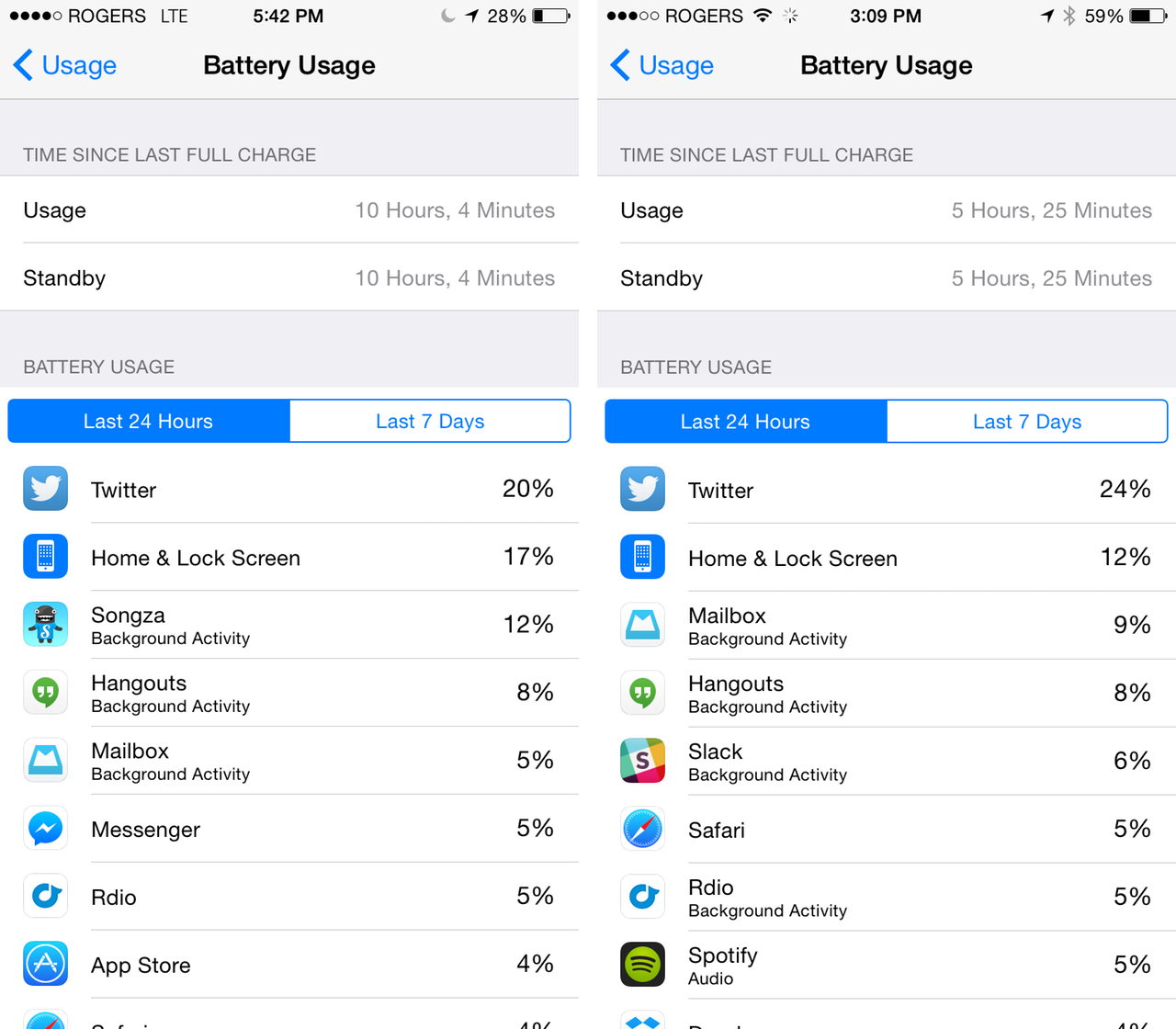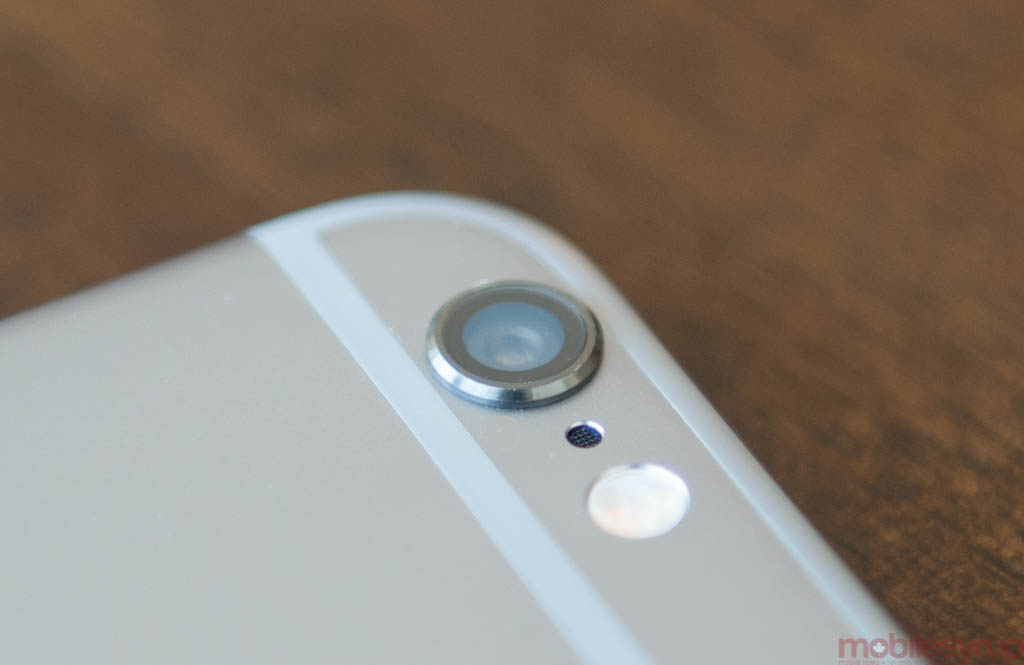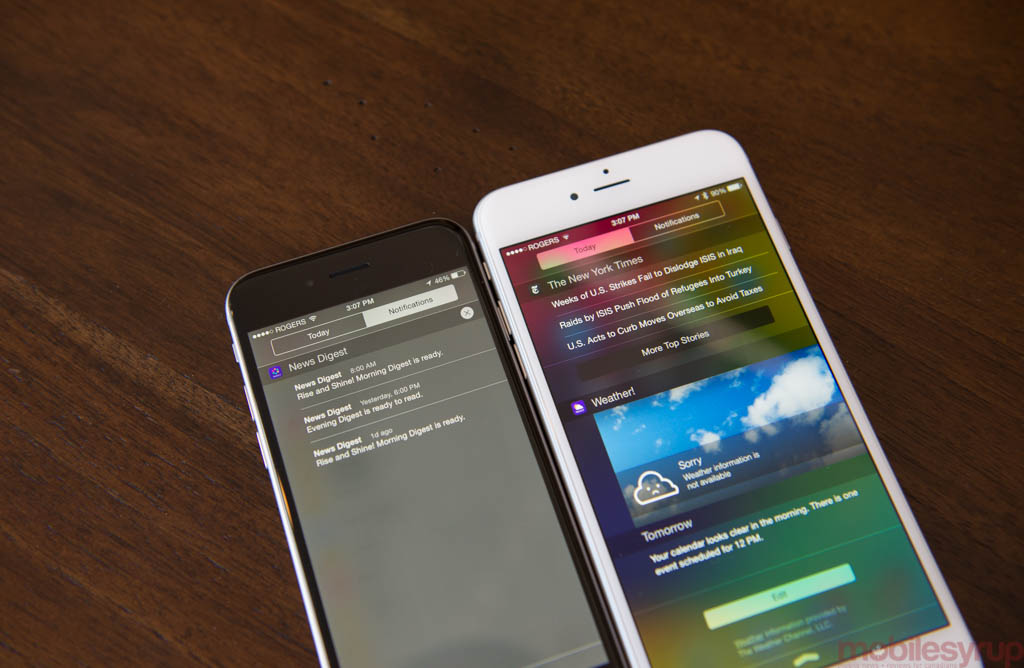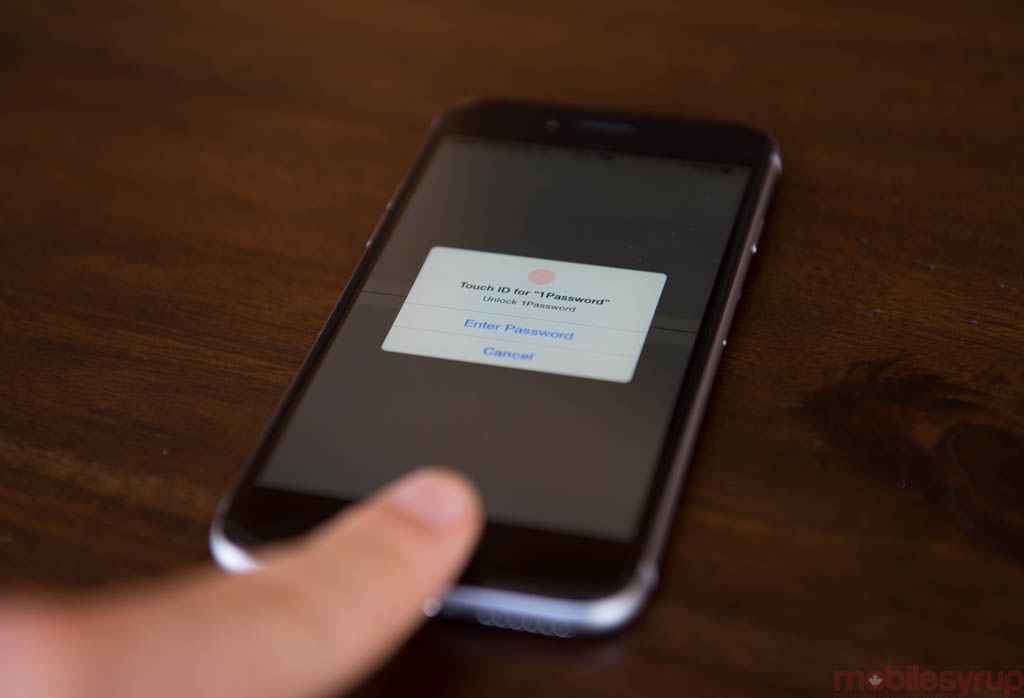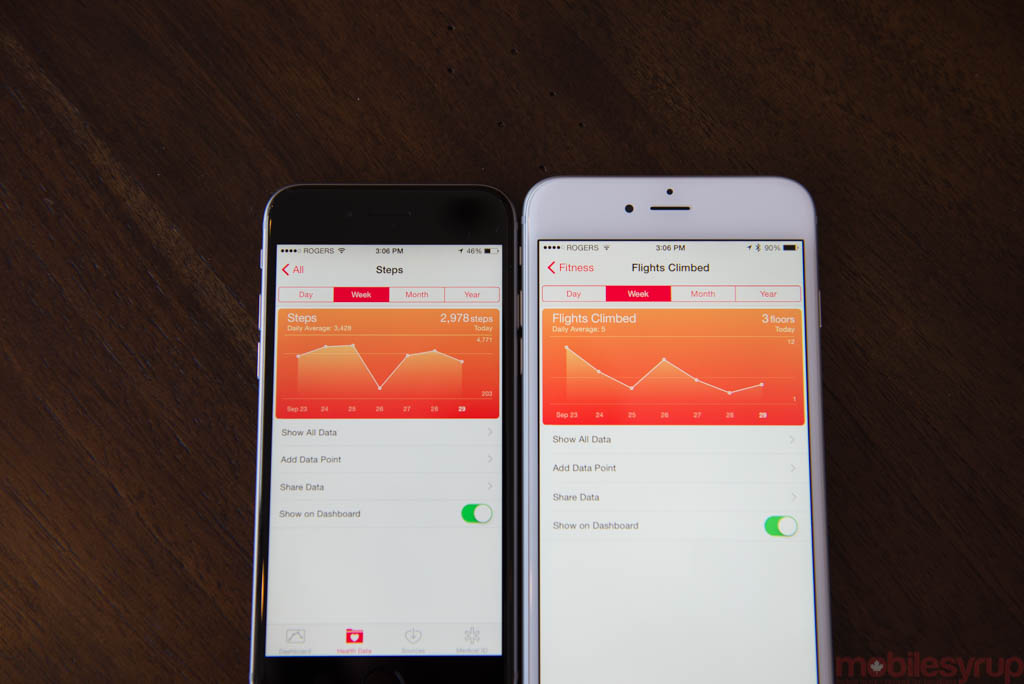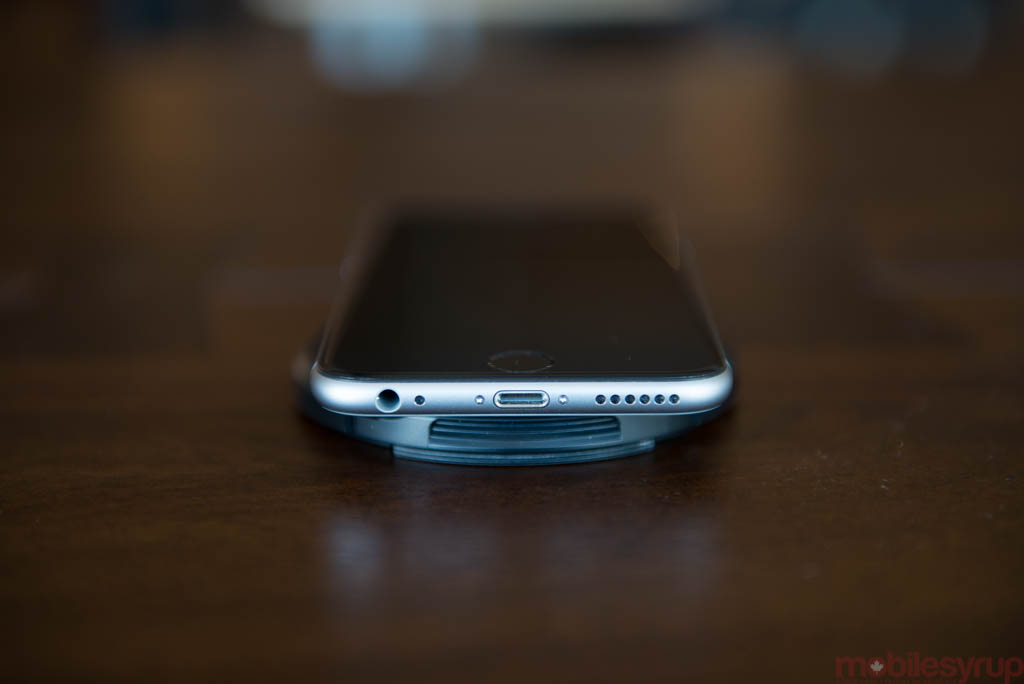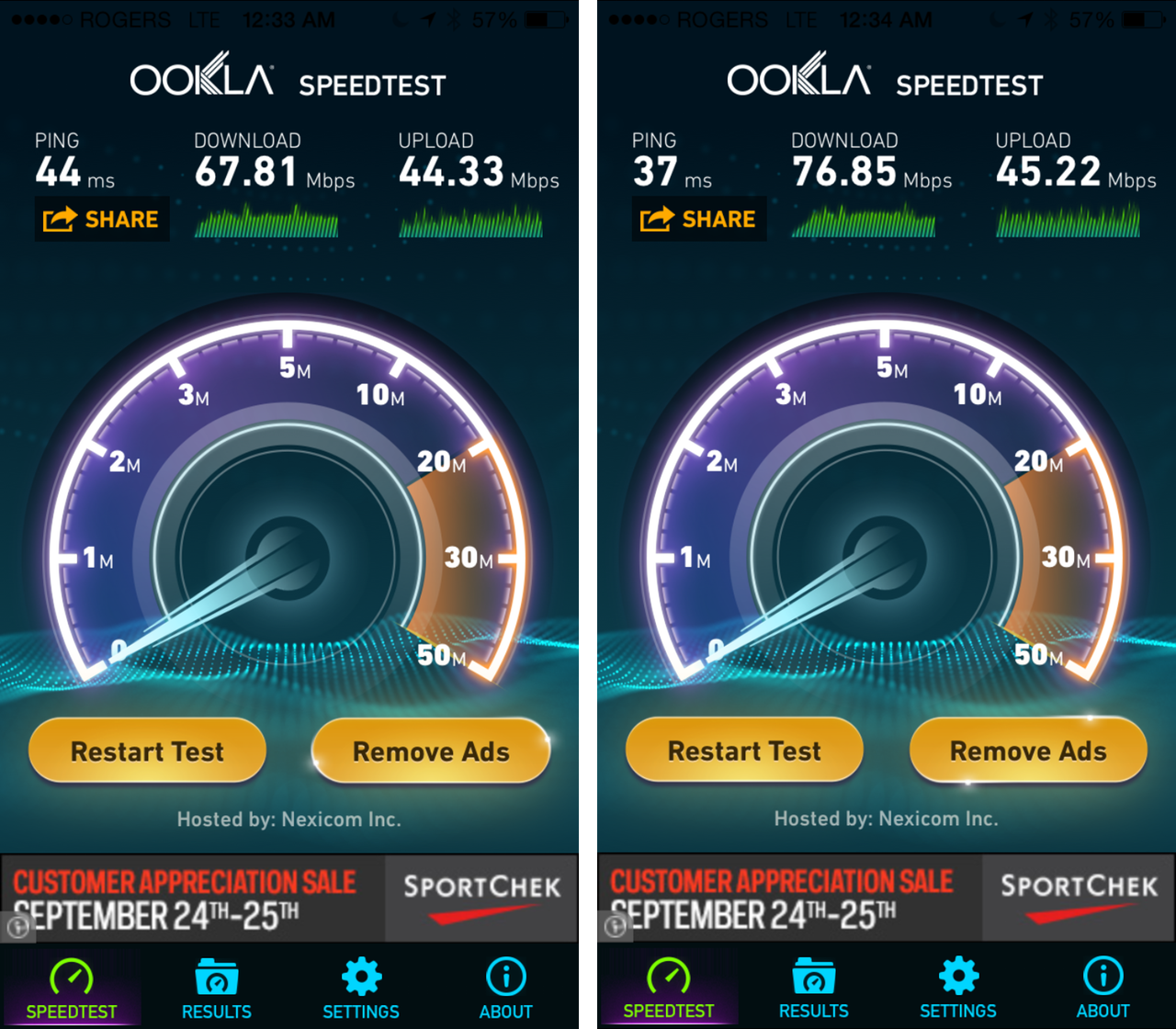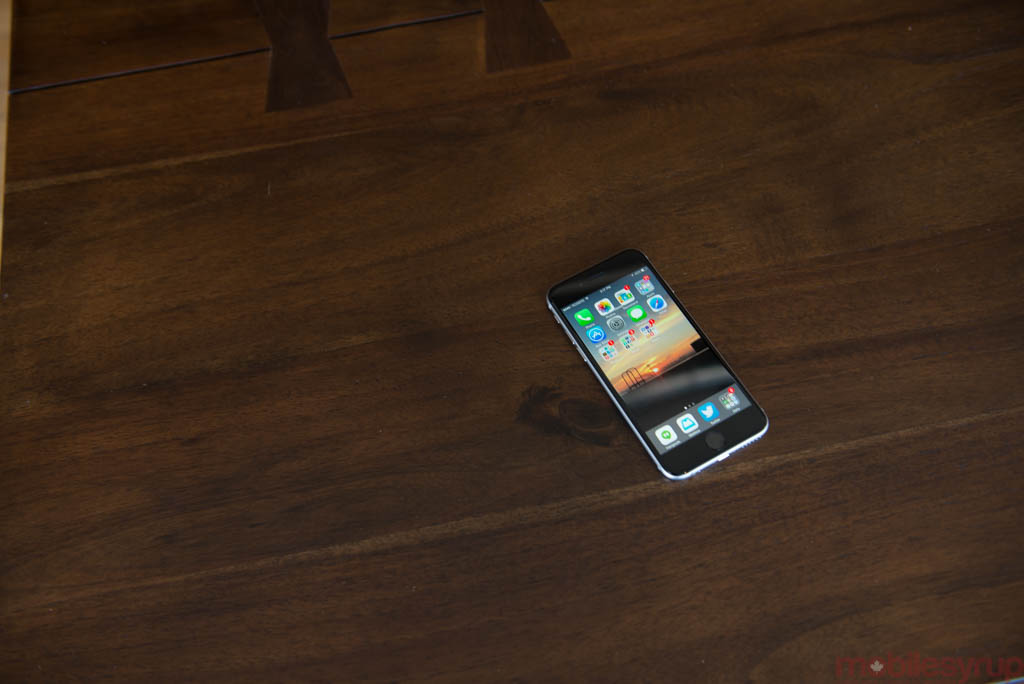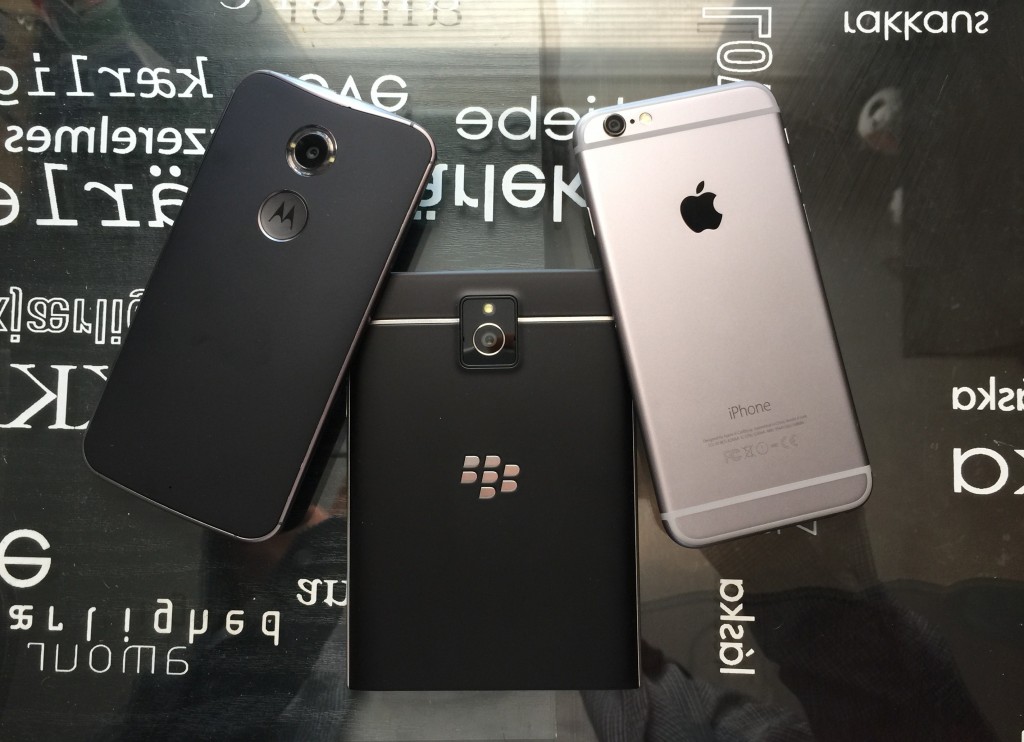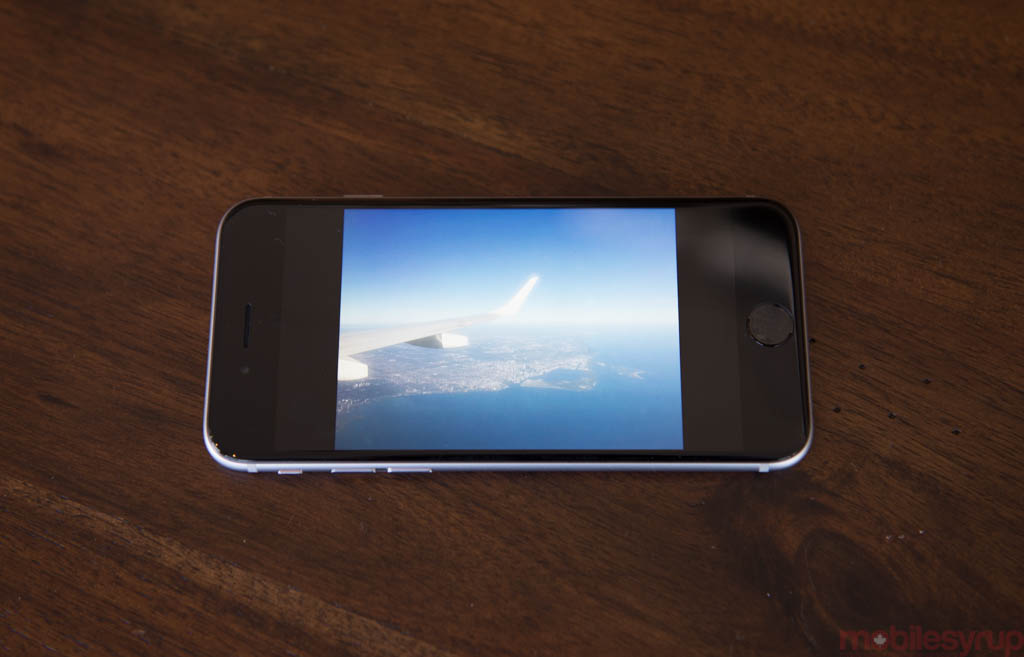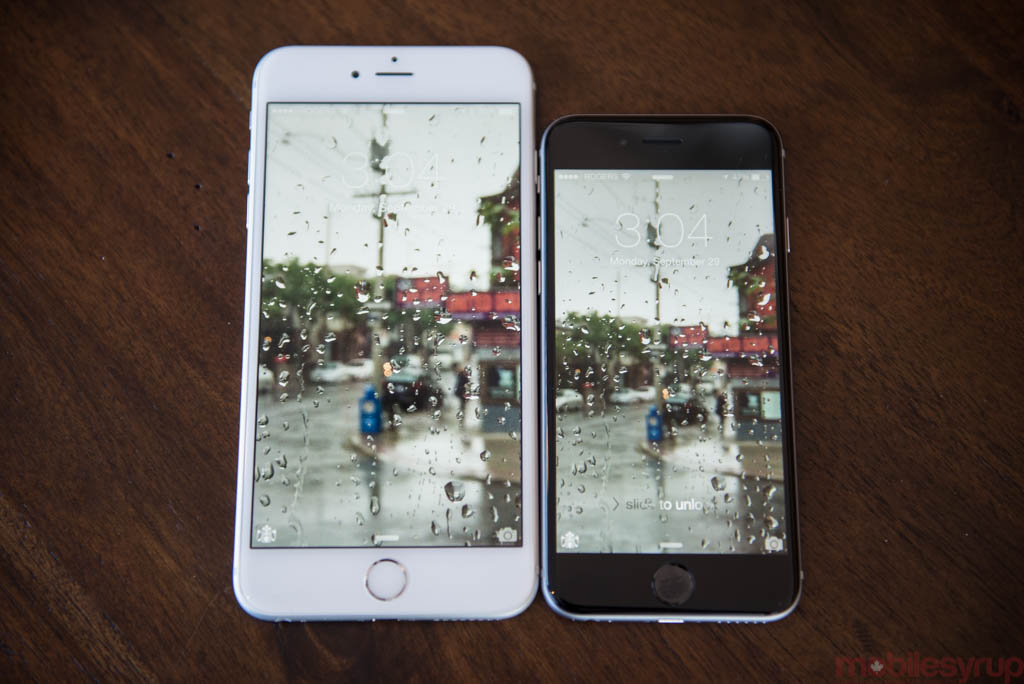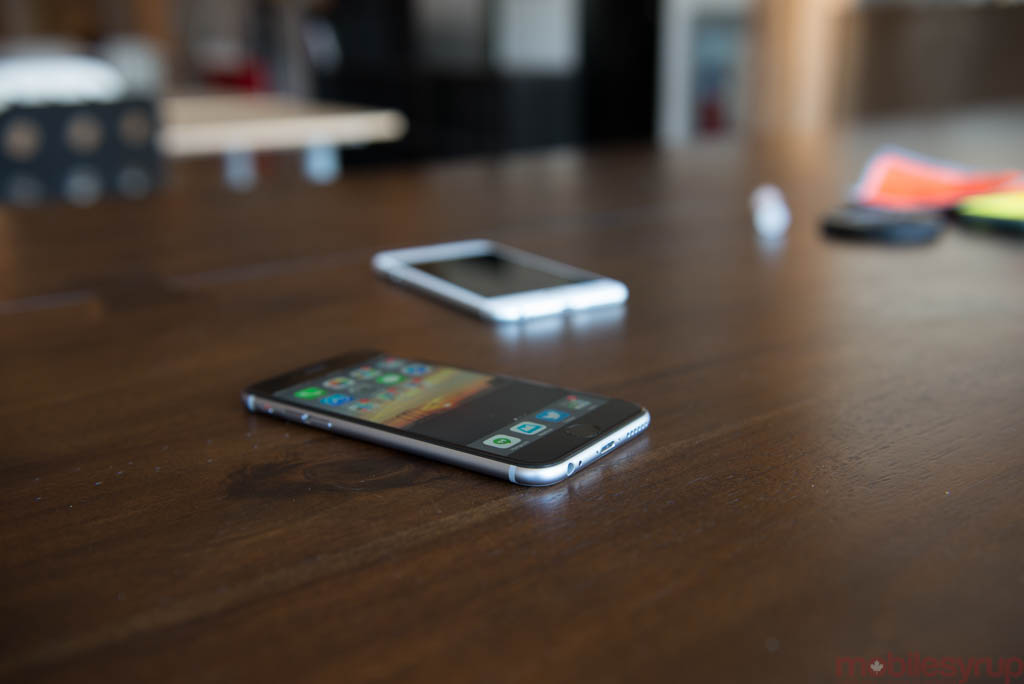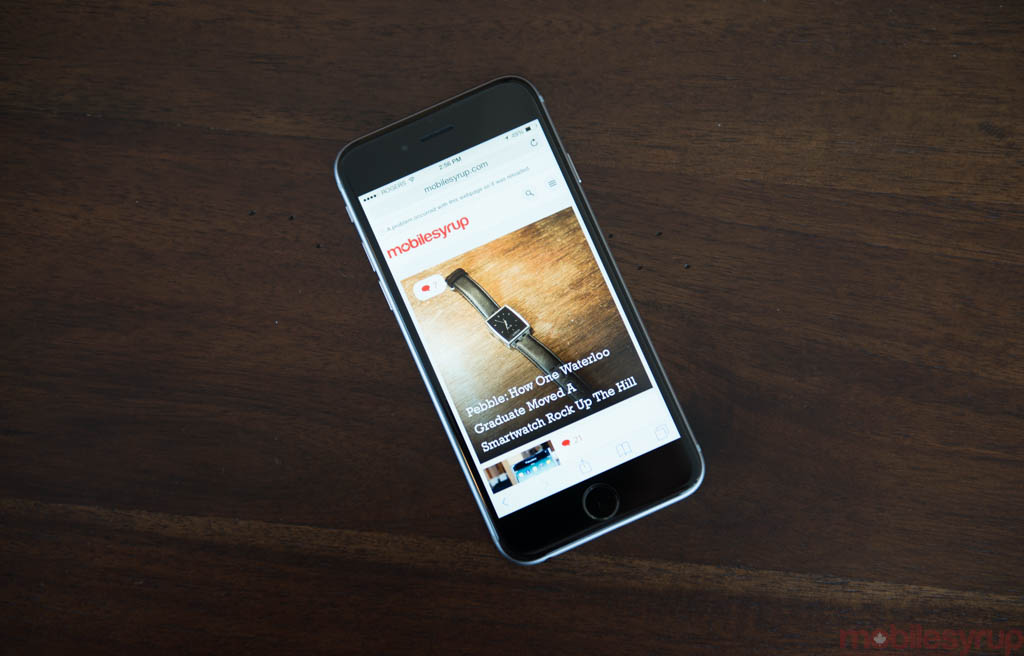
Though it always seemed somewhat unlikely, one would occasionally hear rumblings of a larger, higher-resolution iPhone. Even when the iPhone 5 was brand new, speculation abounded for a 4.8-inch iPhone Math which, of course, never materialized.
But as Samsung et al. pushed screen sizes into the hand-stretching realm of five inches-plus, Apple either had to stubbornly dig its feet into the sand and insist that 4-inches was the perfect compromise between capability and one-handed accessibility, or get with the times. Thankfully, it chose the latter option.
With the iPhone 6 and its gargantuan counterpart, the iPhone 6 Plus (review coming soon), we have acquiescence of a broader market need for larger phones. What we don’t have from Apple is an acknowledgement that higher pixel density is necessarily the area in which to compete. With a new form factor and large screen-optimized OS, does the iPhone 6 excite, or is it too much of the same thing?
Specs
- iOS 8.0.2
- 4.7-inch 1334×750 pixel IPS display
- 1.4Ghz dual-core A8 SoC, M8 co-processor
- 1GB RAM / 16, 64, 128GB storage options (no microSD)
- 8MP rear camera w/ 1.5 micron pixels, f/2.2 lens, dual-LED flash
- 1080p video capture @ 60fps, 720p @ 240fps
- 1.2MP front-facing camera
- WiFi (b/g/n/ac @ 433Mbps), Bluetooth 4.0, A-GPS, NFC (for payments only)
- Barometer, gyroscope, Touch ID fingerprint sensor
- LTE (Bands 1, 2, 3, 4, 5, 7, 8, 13, 17, 18, 19, 20, 25, 26, 28, 29)
- 1810mAh battery (internal)
- 138 x 67 x 6.9mm
- 129 grams
Design & Display
How do you introduce a smartphone that needs none? Everyone knows something about the iPhone, from the interesting to the banal.
This year’s model is longer, thinner and more rounded. It’s also considerably bigger than the iPhone 5s, though it doesn’t feel oversized. Compared to other compact 4.7-inch devices on the market — the original Moto X in particular — Apple’s fetish for symmetry, and its insistence on a hardware home button, makes the iPhone taller than we’d like.
Because Android has transitioned, for better or worse, to on-screen navigation buttons, OEMs can be more capricious with their screen real estate. The LG G3, for instance, is barely 7mm taller than the iPhone 6 with a screen nearly an inch larger diagonally.
Still, it’s hard to fault the iPhone 6 for being too large: it’s only 13% bigger in volume than its predecessor, despite having nearly 40% more screen real estate. Not only are the bezels more compact (though not compact enough), the promotion of curvature near the screen edges lends an elegance and fluidity to the iPhone 6 that was missing from the previous four industrial-in-nature design generations.
Apple has wisely moved the position of the power button to the right side making it easier to depress with the thumb (take a note, HTC), and the volume buttons are now elongated metal lines, far simpler to delineate.
Though it is unmistakably an iPhone, the 6 is a very different-feeling product to the 5s. Less dense and considerably better-balanced, it feels almost wispy but never fragile. One-handed use is still possible but not advisable in many situations (and Apple’s solution is a bit clumsy, as we’ll see later).
The Button, that continued source of focus for Apple, is no longer merely a single-purpose home key. Touch ID, now available to third-party developers, enables quick unlocking and payment approval, while double-tapping (not double-pressing) activates Reachability, Apple’s newfangled solution for small human thumbs.
Though Apple hasn’t said anything publicly about it, Touch ID either has a higher-resolution activation sensor or has been re-calibrated, because it is much more consistent. Say what you will about Touch ID’s novelty, but Apple’s biometric implementation is not only physically superior than its nearest competitors but it has built the fingerprint into an ecosystem gateway.
Around back, one witnesses Apple’s most divisive design choice: the use of thick plastic lines to separate the antennas from the main metal casing to prevent attenuation in the hand. (It’s a common misconception that the plastic lines actually house the antennas underneath.) It’s not that we dislike these lines — though functional, they could stand to be thinner — but that compared to the dual-toned finesse of the iPhone 5/s, the 6 seems like a step backwards.
Another point of contention, and one that will continue to irk those with “naked” phone sensibilities, is the protruding camera. In light of what is quickly becoming the tech scandal of the year, Bendgate would likely have been prevented if Apple has chosen to maintain the thickness of the iPhone 5s, and the camera might have been flush with the back of the device, too.
Blinded by physics, Apple chose to make the iPhone 6’s 8MP iSight camera lens protrude about 1.5mm rather than slimming the module itself (or, rather more advisably, sticking in larger battery). Covered with sapphire composite, the lens is unlikely to get scratched or damaged but it speaks to the limits OEMs face with the few remaining “analog” smartphone components.
The iPhone 6, for the first time, is not immediately the most striking of Apple’s smartphones — to me, that is still reserved for the 2012 iPhone 5 — but it’s a considered evolution in usability. The curved glass screen creates a more natural surface on which to swipe, a gesture well-utilized in iOS 8, and the featherweight anodized aluminum chassis still feels solid without being slippery. It’s hard to argue that the extra real estate is not valuable — you’re getting more pixels and more touch points while maintaining pixel-perfect @2x assets at 326ppi — but Apple is still approaching its most popular product with a keenly conservative eye.
In 2010, a display with 326 pixels per inch was close to double its nearest smartphone competitor. But HTC, Samsung and others quickly supplanted Apple in the insulated pixel density war, leaving Cupertino to assert dominance in other areas — viewing angles, colour gamut, touch responsiveness, reflectiveness.
This year, the iPhone 6 tells much the same story: though referred to as a Retina HD display, Apple chose not to ruffle too many feathers on the developer side by boosting only the panel’s resolution, not its density. The iPhone 6’s panel is top-notch by almost every metric except density, though only if compared directly next to a 1080p panel like the HTC One M8.
Instead, Apple focused on other metrics: improving contrast ratio, an area traditionally at a disadvantage compared to the deep blacks of an OLED panel. Apple claims a 1400:1 contrast ratio on the iPhone 6, a number that DisplayMate offers as the best ever seen on an LCD panel. Similarly, Apple’s claim to a 100% colour gamut means that reds appear red, not pink, and whites flat, not a variation of robin egg blue.
On the one hand, it’s tough to embrace Apple’s decision to hold back the iPhone 6’s display potential, especially when it shows itself willing to explore higher densities on the iPhone 6 Plus. On the other hand, boosting the 4.7-inch iPhone 6 beyond 326ppi would have done awful things to battery life, and Apple would have had to accede even more control to developers in terms of app scaling.
The iPhone 6, then, faces the same issues companies like Motorola and Samsung dealt with trying to sell a premium device with a screen more suited, on a sheer numbers basis, to a mid-range device. The original Moto X had a 4.7-inch 1280×720 pixel OLED display that wiped the floor with its competitors in terms of colour reproduction, viewing angles and touch response, but was maligned for not keeping up in the metric that truly sells phones: screen density. The same is true of the Samsung Galaxy Alpha, another 4.7-inch 720p device.
Apple is in a different position because its marketing supersedes numbers, but increasingly less effectively than it used to. Potential iPhone customers may see a 4.7-inch 1334×750 pixel display, top marks in everything else, and say it’s not enough. It may not matter that 326 pixels per inch is considerably higher than what’s needed to discern individual pixels, or that most iOS apps are already optimized for that density. In deciding not to play in the numbers game, Apple may come off like a hypocrite.
Performance & Battery Life
The same can be said of the iPhone 6’s performance. Paired with a dual-core 1.4Ghz A8 chip, Apple claims “desktop-class” performance from its second-generation 64-bit SoC, with a 20% boost over last year’s A7.
The A8, like the A7, uses a new 64-bit ARMv8 architecture that does considerably more per clock cycle than the equivalent Cortex A15-based solution from Qualcomm or Samsung. While a pair of 1.4Ghz cores appears underpowered compared to the high-speed multi-core ecosystem of Android, Windows Phone and even the latest BlackBerry, Apple has two advantages: it controls the hardware, software and app ecosystem; and it has a considerable head start over Android in building 64-bit-class applications. The latter doesn’t inherently offer better per-clock performance, but it can and in many cases is providing developers with extra leg room.
Compared to Google or Microsoft, Apple also works more closely with developers to take advantage of the limited resource a mobile chip like the A8 actually offers. Chipworks has exposed a next-generation IM PowerVR GX6450 GPU in the A8, which should offer 25-50% performance than the A7, but Apple’s graphics frameworks — SpriteKit, Metal — give developers deeper access to various capabilities of the GPU.
We did our own tests comparing the iPhone 6 to the iPad Air, both of which run at 1.4Ghz (the iPhone 5s runs at 1.3Ghz and is more prone to throttling) and found that the A8 chip has a clock-for-clock advantage of around 12% in single-core performance and 17% in multi-core performance. This is by no means as staggering as the jump from 32-bit A6 to 64-bit A7 — the A7 was an enormous performance leap any way you cut it — but it’s still a notable improvement.
The four-core GPU is a slightly more impressive jump over last year, coming in ahead of every Qualcomm-based GPU we’ve tested (though we don’t have any Adreno 420-equipped Snapdragon 805 devices just yet) and just under the monster NVIDIA Shield Tablet’s Kepler K1 SoC (which, being in a tablet, has a lot more room to breathe. We can’t wait to see how far Apple pushes the A8 in the new iPads later this year).
While numbers are good, the reality is that Apple obscures such metrics for a reason: it focuses on experience. With only 1GB of RAM, one would expect the iPhone 6 to suffer from the same performance hiccups as Android devices with an equivalent memory size, but that’s not the case. iOS sets rigorous memory constraints to apps and games, and the new iPhones feel considerably smoother than both the 5s and iPad Air. Apps load quickly, the camera shutter routinely outpaces my workflow, and games — even high-performance 3D titles — play at 60fps. Android may be improving in this regard, but it will likely take until Lollipop before Google’s mobile OS can meet iOS head-on in the battle for smoothness (and it will probably still lose).
The A8 makes up for its rather modest performance leap in other ways: the chip is built on a new TSMC 20nm manufacturing process, which reduces the overall size and energy output by up to 50% (though in most cases around 20%). We found this to be the case with the iPhone 6, lasting approximately two to three hours longer per day than the iPhone 5s.
With an 1810mAh cell, the iPhone 6 lasted around 10 hours (9:57 to be exact) in our video looping tests, which is quite a bit higher than most Android devices we’ve tortured. It’s also a sizeable improvement over the iPhone 5s, and should lead to decent day-to-day battery performance.
There are Android devices like the HTC One M8 and upcoming Xperia Z3 that overshadow the iPhone 6 for uptime, but using it constantly for two weeks I never saw a dead battery before midnight. There are numbers and there is real-world usage, and the iPhone 6 lasts all day, every day. Unless you’re someone who tends to forget to plug in your phone at night, this reality shouldn’t be a concern.
Camera
There are smartphones with larger sensors, bigger subpixels, more megapixels, and superfluous features, but shot for shot the iPhone 6 is the best mobile camera on the market.
After using the iPhone 6, it’s hard not to say its camera is the killer spec, the thing that keeps you coming back, year after year. I’ve used practically every high-end smartphone on the market, and barring the sheer detail from a device like the Nokia Lumia 1020, the iPhone 6 consistently delivers the best results in more situations. Period.
This year, Apple hasn’t messed with the camera setup much — it’s still a Sony-produced 1/3″ 8MP sensor with 1.5 micron pixels — but has added Phase Detection Autofocus to not only improve the speed of individual shots, but to facilitate continuous autofocus in 1080p video (at either 30 or 60fps). However, low-light performance through pixel binning has improved dramatically over the 5s, meaning Apple has at least upgraded the sensor.
Though the aperture has remained at f/2.2, Apple has opened up its camera API to third-party developers, allowing unbelievably granular control over manual settings like ISO, shutter speed, white balance and even focus (yes, focus!). This isn’t new: Nokia has been doing this for years, and HTC’s One M8, despite having a terrible camera, is quite well-equipped. But Apple just gets it right, and there’s little question that you’re going to achieve a great photo most of the time.
This is especially true comparing the iPhone 6 to its predecessor in low-light; the iPhone 5s and 6 perform comparably in day-time shots, with the former shooting slightly warmer, but when the lights go down the iPhone 6 (and, as you’ll see in the gallery, especially the 6 Plus) excels.
The iPhone 6 also sports 240fps slow-motion capture at 720p, a quirky but fun addition that builds on the iPhone 5s’s 120fps slo-mo.
Finally, with iOS 8’s Extensibility options, it’s far easier to edit photos using third-party apps like Afterlight and VSCO Cam straight from the native Photos app. Apple has even beefed up its own photo editor, with granular controls for straightening, exposure, white balance and more.
While the quality speaks for itself, it’s hard to overstate how important the photo- and video-taking experience is to the overall feeling of superiority over other smartphones. Android manufacturers, especially LG, Samsung and Sony, have nailed the optics, while HTC and Motorola have nailed the UI, but none come close to offering the totality of Apple’s custom image signal processor which, time after time, produces excellent photos.
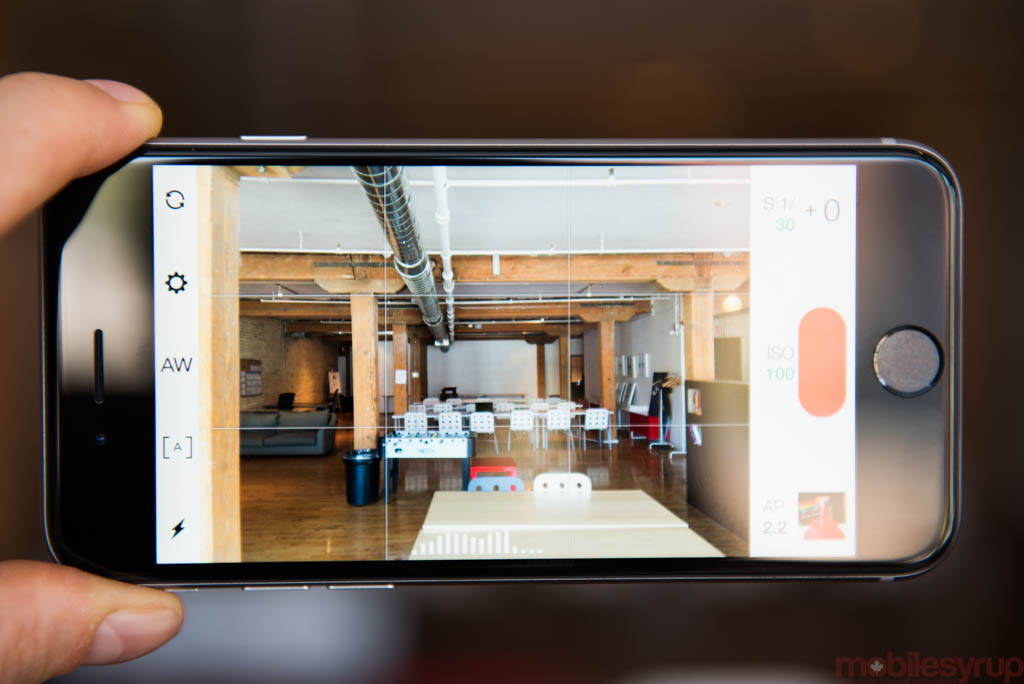
Take the 16MP sensor in the Galaxy S5: it goes toe to toe with the iPhone 6 in most well-lit situations, but falls apart in low-light. Samsung throws in every camera option under the sun, but Apple’s panoramas, HDR and easy exposure adjustments are simply better to use and produce superior photos.
Though Apple chose to stick with 1080p video encoding over the increasingly-popular 4K standard found in high-end Android devices, the quality has improved this year with the choice of 60fps capture and cinematic stability, which uses a software algorithm to even out bumps and rolls in the shutter. It’s impressive, though not quite reaching the heights of the iPhone 6 Plus or LG G3, both of which sport optical image stabilization.
Software
In our iOS 8 review, we focused more on the excellent new features that the software offers — many of which are a welcome addition to an already-capable mobile operating system — but glanced over the perception that iOS 8 was riddled with bugs. Conspiracy theories aside, we experienced none of those show-stopping issues on the iPhone 5s running iOS 8.0 GM.
Moving to the iPhone 6 on iOS 8.0.2, the situation is gravely altered. Apps crash; notifications freeze; widgets fail to update; springboard randomly reboots; third-party keyboards crash and disappear without warning. This is the reality of early-days iOS releases, but the iPhone 6 and 6 Plus seem more sensitive to these changes than the 5s, which until now has shown only a sliver of those instabilities.
That’s not to say iOS 8 is unusable on the iPhone 6, but in its current state many of the extensive improvements we covered in the review are overpowered by that “new iOS smell.”
And while the situation isn’t as significant on the iPhone 6 as it is on the larger 6 Plus, many app developers have yet to update their apps to support the devices’ new resolutions, upscaling not only the content but the keyboard, with frustrating results.
iOS still feels static despite improvements made on the developer side that have resulted in apps more readily talking with one another. I still think being able to use one’s fingerprint to quickly enter a password into a text field in Safari using 1Password is the future of mobile computing — formerly disparate and siloed aspects of the OS working harmoniously for the first time — but there are still aspects of iOS that feel stuck in the past.
App badges, for instance, hovering at the top right of a folder, are neither distracting nor informative; like mobile ads, they blend together and are easily ignored. Notifications, too, feel considerably less intuitive than on Android, even with the slow influx of apps supporting quick actions.
There are other elements of iOS 8, like Health, that feel both useful, beautiful and refreshing. The improvements made to Messages will certainly be welcome to iMessage fans — audio notes, improved group messaging and per-contact word suggestions — and quick access to recent contacts in the multitasking menu is an obvious and welcome addition.
And thankfully, iOS still has the best app ecosystem in the business, with companies big and small focusing their energies on building great apps before releasing on Android, Windows Phone or BlackBerry. The fruits of iOS 8’s developer enhancements are already evident in the bevy of superlatively designed titles from companies as broad as NYTimes, Tumblr, Camera+, Circa, Goodreads, Authy, Skype, The Guardian, CBC News, Digg and more. And that doesn’t even begin to tally the iOS-exclusive games that take advantage of the iPhone 6’s improved GPU.
If you live inside apps, Apple’s ecosystem is still the place to be. Android has been quickly encroaching in app numbers, but many startups bring features to iOS first, or exclusively. And there are still situations, like with Instagram’s excellent Hyperlapse, where the necessary system APIs are just not available on Google’s OS.
A note on third-party keyboards. While they have potential, the big guys like SwiftKey, Swype, Fleksy, Minuum and others still work far better on Android. To some extent, this is due to Apple’s enforced security measures, but there are other reasons, too. It’s not possible to hold down on SwiftKey’s letters to quickly enter a number or symbol, and Swype’s autocorrect seems far less accurate on the iPhone 6 than my Moto X. I’m sure developers will address these issues in time, but I’d recommend sticking with Apple’s vastly-improved QuickType keyboard for now.
Read More: iOS 8 review
Connectivity & Sound Quality
The iPhone 6 finally supports two technologies that Apple loyalists have waited nearly two years for: Category 4 LTE, and Band 7 support. The former allows the new iPhones to download at speeds up to 150Mbps on bands with ample spectrum; the latter allows them to connect to Rogers’ and Bell’s extensive 2600Mhz networks, facilitating those faster speeds in the first place.
The iPhone 6, like all other iPhones, has excellent sound quality in quiet and loud environments. It’s not quite the four-microphone-noise-cancellation-adjustable-headpiece-volume advancement of BlackBerry’s Passport, but it’s up there with the new Moto X for volume and clarity.
It is also VoLTE ready, whenever the Canadian carriers decide to roll out that feature. Speaking of waiting for carriers to roll out features, Rogers’ promised WiFi calling feature is AWOL on the iPhone 6 at launch, with no explanation for its absence. In short, WiFi calling is the ability to route cellular calls through a WiFi network to ensure a strong connection. Apple’s advantage over other services like Rogers OneNumber is that it can seamlessly transition between states, and it happens behind the scenes, much like iMessage.
Like all iPhones, the single downward-facing speaker produces powerful, albeit thin, sound that outpaces most smartphones on the market — except for the HTC One M8 and its stereo ilk.
One thing lacking from the Canadian version of the iPhone 6 is NFC connectivity. Sure, the device has the chip and accompanying antenna, but for the foreseeable future it will lie dormant, waiting until Apple reaches agreements with banks and regulators over Apple Pay. It may be worth waiting for but, like iTunes Radio, it’s all about priorities: Canada may have a mature touchless payment infrastructure, but it’s still small potatoes next to the potential revenue generated from transactions in the U.S. and Western Europe.
The Competition
These days, the iPhone is by no means the only good game to watch. A bigger screen means more content on the display, and an improved processor upgrades everything from app performance to camera quality, but the iPhone 6 only stands well ahead of the pack in a few areas.
Build quality continues to be an Apple advantage, with a nicely-curved screen and well-machined aluminum chassis (that, under pressure, has been shown to be less resilient than we’d like). But HTC also makes beautiful, well-machined aluminum smartphones, and Samsung is slowly transitioning its products to a metal/plastic hybrid process.
The HTC One M8 is the device most immediately recognizable as the Android equivalent of the iPhone 6: its user interface focused on simplicity and performance, and little touches throughout the OS lead to an overall better experience. But its camera continues to be a pain point even as its battery life towers over the competition.
The Galaxy S5 is likely the iPhone 6’s closest rival for public recognition, and Samsung made considerate improvements to both the hardware and the software this time around. That the iPhone 6 is not at least partially water resistant, especially considering its unibody construction, irks, especially since Sony’s Xperia Z3 has shown a device needs neither port flaps nor an unwieldy construction to offer ingress protection.
The new Moto X offers an improved spec sheet over last year’s version while keeping the same great notification and voice features that made it such a great phone in the first place. Its always-listening voice assistant puts Apple’s modest “Hey Siri” functionality to shame, especially because the iPhone needs to be connected to a power source to enable the feature. While Siri may offer better semantic representations of human conversation, Google Now’s proactive integration with Android is a productivity boon. Google’s services, even Now, are available on iOS, but they’re not quite as well-executed as on Android.
Finally, there’s price. The iPhone 6 is quite expensive, even on contract. At $265 for the 16GB version and $749 outright it is definitely a purchase one needs to make with two eyes open. That there are considerably cheaper aptly-capable alternatives, both within the Apple ecosystem and without, muddles the situation. The iPhone 5s is still being sold in 16 and 32GB versions, and may be better suited to individuals who want a smartphone easily usable in one hand. Currently iPhone 5s owners may want to skip this year’s model and wait for the inevitable 6s next September.
iPhone 4 and 4s users will definitely want to upgrade: the camera improvements alone make the iPhone 6 worthwhile. It’s less straightforward to recommend for iPhone 5 or 5c users, especially when most Canadians who bought one are merely one or two years into a three-year contract. Both devices run iOS 8 quite well, though they lack Touch ID and slow-motion video capture, among other features.
Customers will also want to consider whether buying an iPhone 6 (or any smartphone) will force them onto one of the incumbents’ new share plans, inevitably raising the monthly price plan in the process. Buying a phone on contract is a lump payment; altering one’s monthly plan is a cumulative cost-of-ownership increase. Those in such a position may choose to buy the iPhone outright, eating the increased upfront cost in order to stay on a more affordable monthly plan.
The Nexus line, which is soon going to be updated, is also a lifeline to those looking to buy a decent phone outright.
And then there is the iPhone 6 Plus, the more voluminous of Apple’s two new products. With optical image stabilization, a higher-resolution display and a significantly larger battery, its benefits are offset by its sheer pants-stretching dimensions.
Wrap-up
The iPhone 6 is one of the best smartphones available today because it performs consummately in every category a smartphone should excel, and falls behind only slightly in a few.
It’s well-made, easy to use and extremely performant, with an industry-leading camera experience and the best app store ecosystem in the world.
Where it doesn’t lead — screen resolution, battery life, customization — it becomes a matter of personal preference. Some people want Samsung’s expandable storage and removable battery; others Sony’s high-resolution camera sensors and waterproof frames; others Windows Phone’s personalization or BlackBerry’s excellent keyboards. But if sales are any indication, more still want Apple’s no-fuss approach to smartphones, controlling the hardware, software and cloud in a closed loop.
The iPhone 6’s improvements are subtle, similar to the approach taken with iOS 8. Together, they form a capable if imperfect pair, producing a smartphone that benefits from Apple’s ubiquitous attention to detail.
MobileSyrup may earn a commission from purchases made via our links, which helps fund the journalism we provide free on our website. These links do not influence our editorial content. Support us here.

